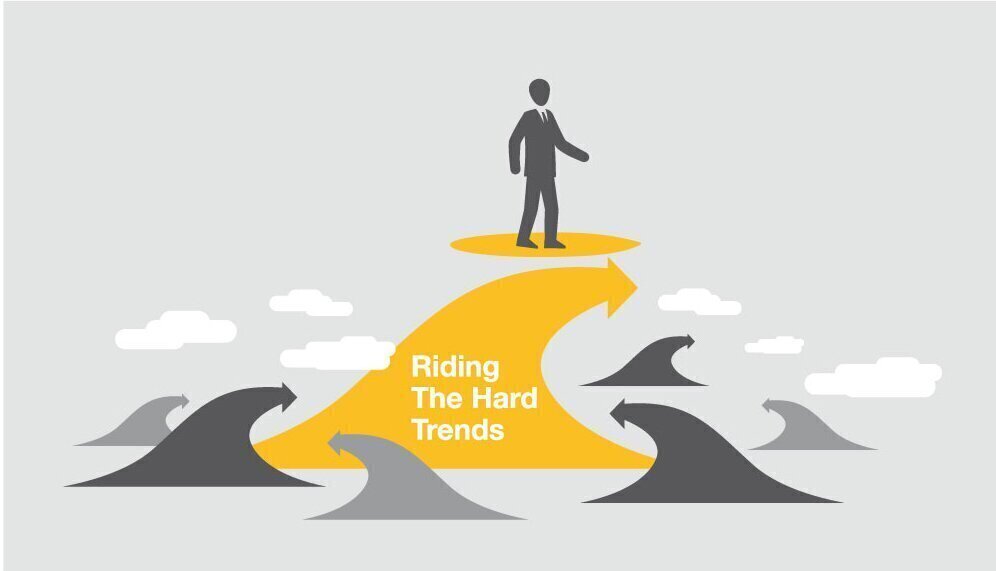Trust is defined as “the assured reliance on the character, ability, strength, or truth of someone or something.” We strive to trust others in our personal lives every day, trusting a partner, friend, or family member. We trust them to tell us the truth even when it hurts. We trust them to communicate and be compassionate, but also truthful and to stick to what they believe in.
The same goes for employee business relationships and customer business relationships, but trust is even more essential in everyday business operations and simultaneously difficult to build and even harder to repair if broken.
Why is this so?
This is a complex question to answer, and it is difficult to build or rebuild this trust with an Anticipatory mindset. As evidenced by David Horsager in a recent episode of my Opportunity Hour: Conversations with the Masters, institutional trust is down, whether that institution be a company you own, one you work for, the government, or another professional entity.
In his book, “Trusted Leader: 8 Pillars That Drive Results,” David shares eight key qualities that successful companies possess to cultivate trust among employees and customers. During our interview, I examined these pillars with David and discovered their power in cultivating an Anticipatory Mindset for building and, more importantly, rebuilding trust with both customers and employees.
The 8 pillars of trust and being an Anticipatory Leader
- Clarity

Simplicity and exactness are vital keys to developing institutional trust. David has found that people do not trust leaders who are overly complex or, conversely, too vague either. If a leader’s vision or the steps to achieve such vision is not communicated clearly to their audience, a sense of mistrust begins to develop.
To connect this to cultivating an Anticipatory mindset as a leader of an institution, having a lack of clarity around your goals translates to a lack of understanding Hard Trends. Hard Trends are those that will absolutely come to fruition, and with the capability of defining what a Hard Trend is both in your industry and in the outside world, you should be able to bring your team and your customers a clear picture of your intentions.
- Compassion
Compassion does not mean that the organization or leader was compassionate toward us personally. It means that they were compassionate toward the industry and organization as a whole, fostering a sense of unity in teamwork. David and I discussed how we as humans look toward those that we feel have a higher purpose as it demonstrates both a trust in stability and a trust in guidance.
Whether it is a goal for an organization we believe in or a product that we believe in, we trust those that care beyond themselves. In regard to an Anticipatory mindset, this pillar aligns quite well with my thoughts about placing significance over success as a leader. Concrete trust is cemented when you aim to sculpt a significant legacy in the world.
- Character

The pillar of character from David Horsager means that we trust those who do what is right over what is easy. The easy route is essentially taking the simple way out regardless of the problems it may have left, whereas a trustworthy character comes from putting in the legwork to right the wrongs, no matter how large or small.
Here is a large one, indeed: David and I discussed the BP oil spill of 2010 in this episode. Following an explosion of an oil rig, oil spilled into the ocean and ultimately caused a negative ripple effect that altered the area’s aquatic ecosystem. Yes, BP apologized, but they did not shirk from the issue, launching excursions and cleanup initiatives to remedy the mistake. Rebuilding trust with character is a classic case of leveraging a Soft Trend you can influence, such as preventing the ultimate decimation of an ecosystem.
- Competency
Having character does not mean your business or organization is competent in something. If you are trying to sell me on an electric motorcycle your company has built when your cornerstone has always been gas motorcycles, I will not immediately trust that you are competent enough to produce a safe and efficient electric motorcycle.
However, character and competency do go hand in hand. As a way to prove you are competent in your industry overall, having the character to follow through with any shortcomings in an industry your organization appears to be an expert in, or perhaps something you are newly delving into, helps maintain trust. Consider this to be an exercise in exponential thinking from my Anticipatory Leader System — seeing all possibilities available to have a mastery of your industry.
- Commitment

David outlines to us that both employees and customers trust those that have a solid commitment to their industry. If you are constantly choosing new directions, many will see it as a shaky foundation or lack of leadership, with a mindset constantly in flux or that you and your organization do not have your eye on the prize.
Again, if you are able to identify a Hard Trend, it is best to stay committed to it and leverage it to anticipate where it is heading. This is how you evolve your business or organization in a trustworthy way — with Hard Trend future certainties. The key here is to be able to differentiate between these and Soft Trend future possibilities.
- Connection
No business can be successful without collaboration and finding successful ways to combine the two jobs into a cohesive whole. Additionally, humans are social creatures. Whether it is work, play, or for personal reasons, we rely heavily on social connections and interactions when looking to trust individuals or organizations.
As such, the pillar of connection is a foundation of institutional trust, internally and externally as well. As an employee, you likely do not trust a team that does not seem connected just as you likely do not trust eating at a restaurant that in no way connects to their customers through marketing or otherwise. Be a leading force that can be counted upon by again thinking exponentially about how you can connect to those who you rely on as an organization.
- Contribution
You can be a master of all the aforementioned 8 Pillars of Trust, but how do any of those quantify into something substantial if there is no contribution to the industry? This is where the rubber meets the road and you deliver on your promises of excellence to customers and employees alike.
Internally, everyone’s role contributes to the success of your business or organization, but externally, what you contribute to the industry and, more importantly, the world determines if the world will trust you. As David states, you can have character, commitment, connection, and many other pillars mastered, but if there is no tactile contribution, there is nothing quantifiable to trust.
- Consistency
Trustworthiness is strengthened by consistency in all ways. Similar to staying committed to a goal, trust is broken when consistency at a business or organization wavers. The message given off to those internal at your business or the customers you serve is that you will be here in the future, which translates to strength of trust in the moment.

My Hard Trend Methodology lays out an integral roadmap for businesses and organizations to chart their consistency with customers and employees, meaning customers will stick with you knowing you can pre-solve the disruptive problems on the horizon using your products or services and employees rest easy knowing your organization is one they can rely on for their career.
If you are looking for more insights in how to build or rebuild trust with customers and employees, I encourage you to read David Horsager’s book Trusted Leader: 8 Pillars That Drive Results and, likewise, explore my Anticipatory Leader System to see how these great insights align with my Hard Trend Methodology, teachings in exponential thinking, and more.
For more business and entrepreneurship tips, subscribe to our weekly newsletter and follow us on Twitter, Facebook, Instagram and LinkedIn.






![The 15 best finance websites you should bookmark right now [2025 Edition] alphagamma The 15 best finance websites you should bookmark right now [2025 Edition] entrepreneurship finance opportunities](https://agcdn-1d97e.kxcdn.com/wp-content/uploads/2024/09/alphagamma-The-15-best-finance-websites-you-should-bookmark-right-now-2025-Edition-entrepreneurship-finance-opportunities-300x350.jpg)